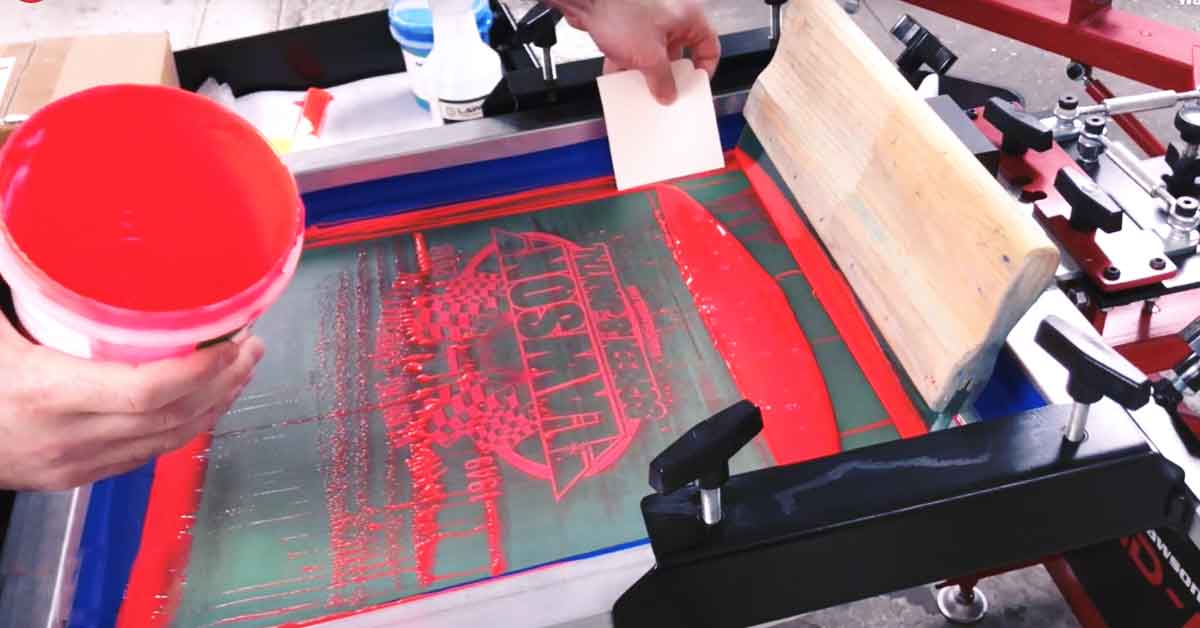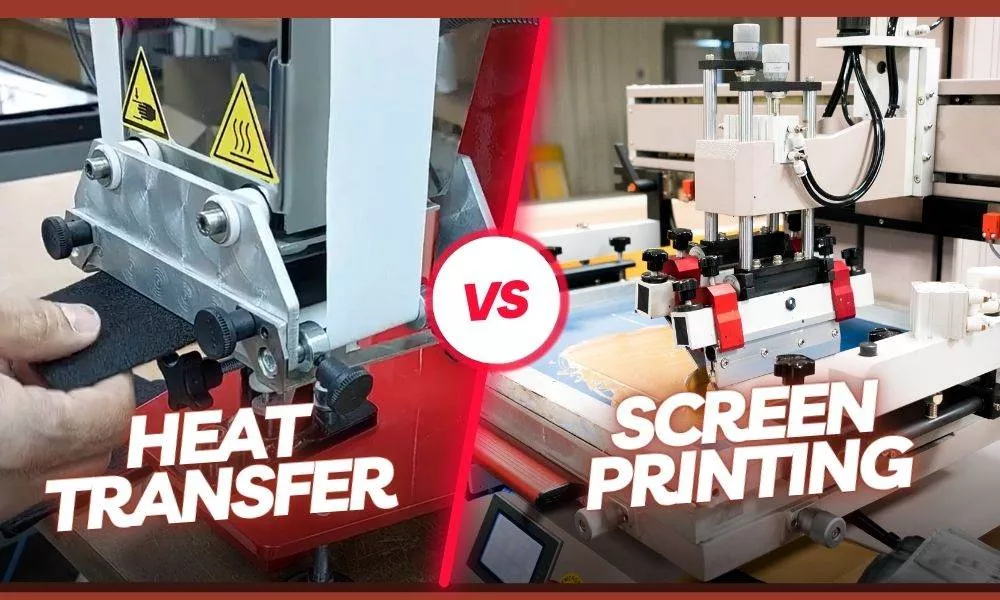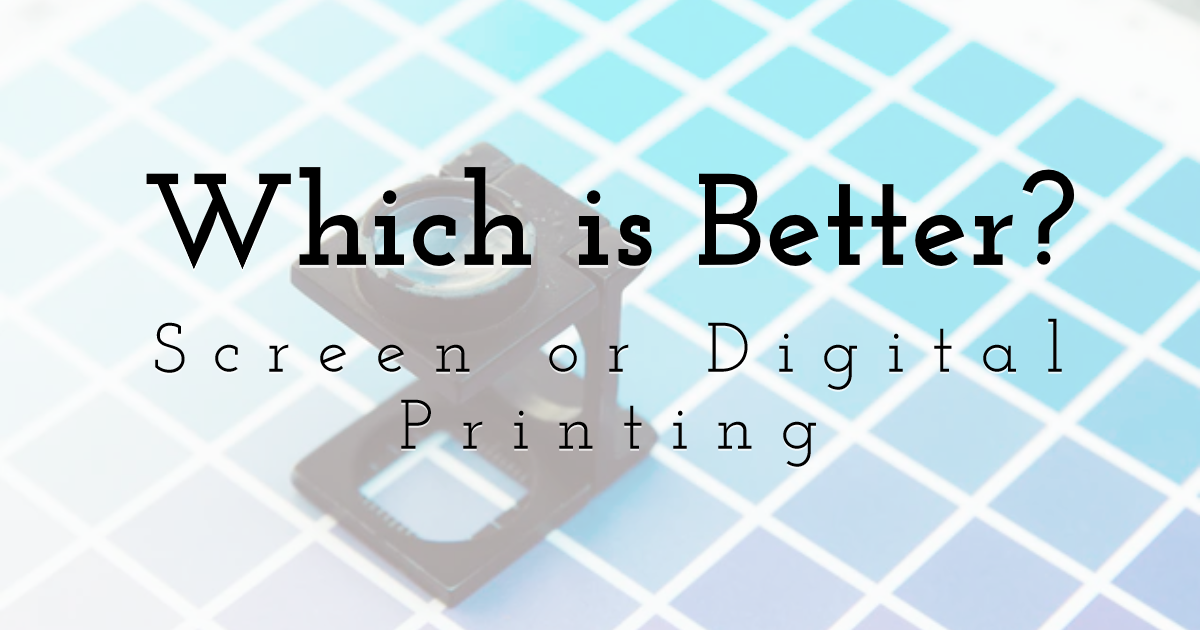Tx Tees Things To Know Before You Buy
Table of ContentsThe Ultimate Guide To Tx TeesThe Tx Tees DiariesThe Greatest Guide To Tx TeesTx Tees - TruthsSome Known Incorrect Statements About Tx Tees Tx Tees Fundamentals ExplainedSome Known Details About Tx Tees
That brings your overall to roughly $1,900 before tax obligation and shipping. Build up various other costs, like the variety of energies it takes to run the store and the expense of ink and solution per style. custom screen printing. Take the print listed below for example. This is a one-color image, so the price of ink per tee shirt is roughly 20 cents.
The solution should only be a few cents considering that you 'd just need to coat one screen for this job. Generally, printers try to make up to 45% profit on a print work.

With DTF, you can print a handful of t shirts, or simply one. Use the very same calculator as the area above to compute exactly how much profit you would certainly make using DTF transfers. Compare the prices and earnings to whichever technique talks finest to your setup and procedure. Both screen printing and DTF have their niches on the planet.
The smart Trick of Tx Tees That Nobody is Discussing
The very best way to understand? Ask about and see what print stores like yours are doing. embroidery shop. Attempt both out and see which you like better
When you're choosing what sort of printing technique to utilize for publishing your art work layouts on your garments, it is necessary that you know the differences between these two techniques so you can take full advantage of results while lessening expenses. Display printing is one of the most frequently utilized method for publishing styles on textiles.
DTG printing is also called spot or direct to garment printing because it publishes just what is required rather than making a screen as screen printers do. https://filesharingtalk.com/members/594250-txtees02?tab=aboutme&simple=1. Display printing works by display filler squeegee screen printing ink screen mesh screen, after that transferring the photo to garment using warmth and/or pressure
The DTG printer makes use of special dye-sublimation inks that are used right into a pre-designed picture by an electronic printing system. The inks end up being component of the fabric, permitting dynamic shades and remarkable information. It's also referred to as spot or direct to garment printing due to the fact that it prints only what is required rather than making a screen as display printers do.
The Single Strategy To Use For Tx Tees
Initially, it's much quicker - you can print a fullcolor image in minutes, instead of hours for display printing. Second, there's no established time or costs involved - you can print any design you like, without needing to develop a display initially. Third, there's no waste - since screen printers screen print one design at a time, they have to screen each shade separately.
The paper is very expensive and can only be used once. Once it's published on, it has actually to be thrown out. - The first acquisition cost is less than the upfront investment of DTG printers- You can publish multi-color layouts one display each time as opposed to having to publish each shade individually like DTG printing.

Not known Incorrect Statements About Tx Tees
Instead of utilizing display mesh as screen printers do, dye sublimation printers utilize laser modern technology to move your images onto garments or paper. A heat process moves the color from its solid-state straight right into the gas phase which consequently merges it onto textile substratums when they are rapidly heated to high temperatures under high stress.
Sublimation printing is green. It uses less water than screenprinting, and because it doesn't include the use of unsafe solvents, it's secure for all sorts of apparel. The dye sublimation inks are also odor free when treated, unlike screen printers that use hazardous chemicals during the screen printing procedure that leave an unpleasant odor.
They also save money on costly tools like direct exposure devices considering that color sublimation printers do not require a UV exposure unit or a flash remedy stove that is commonly used in screen printing (custom screen printing). What is straight to garment printing (DTG Printing)? DTG printing is an electronic screenprinting procedure that prints directly onto fabric using specialized inkjet printers
Excitement About Tx Tees
DTG printing supplies lots of benefits over typical screenprinting, including the ability to publish photographic top quality pictures, better color vibrancy, and the ability to publish designs on darker materials. DTG printers work by warming the fabric ink until it becomes a gas. The gas after that penetrates the material, bonding with the fibers to create an irreversible print.

Display printers merely prepare their display then start printing until they run out of item or ink.- There is a variety of seasoned display printers around the world, which can be helpful for newbies. - It's a slower procedure - screen printers frequently have to await the ink to completely dry before they can print the following color- Screen printers call for hand-operated labor, so there's a higher learning contour and it takes longer to create a premium design- Display printing isn't as precise as DTG printing, so you may obtain some "bleeding" of colors from one component of the image onto another otherwise done correctly.
The Best Guide To Tx Tees
Rather of using screen mesh as display printers do, dye sublimation printers utilize laser modern technology to transfer your pictures onto garments or paper. A warmth process moves the color from its solid-state directly into the gas stage which in turn merges it onto textile substratums when they are rapidly heated up to high temperature levels under high pressure.
Sublimation printing is green. It uses less water than screenprinting, and due to the fact that it does not involve using unsafe solvents, it's safe for all kinds of garments. The color sublimation inks are also odor free when treated, unlike display printers that make use of damaging chemicals throughout the display printing procedure that leave an undesirable smell.
They also save money on expensive devices like direct exposure devices since dye sublimation printers don't require a UV exposure system or a flash remedy stove that is commonly used in screen printing. What is direct to garment printing (DTG Printing)? DTG printing is a digital screenprinting process that prints directly onto fabric using specialized inkjet printers.
Excitement About Tx Tees
DTG printing provides numerous benefits over traditional screenprinting, consisting of the capacity to print photographic quality photos, higher color vibrancy, and the ability to publish styles on darker fabrics. DTG printers function by heating up the textile ink until it becomes a gas. The gas then penetrates the textile, bonding with the fibers to produce a permanent print.